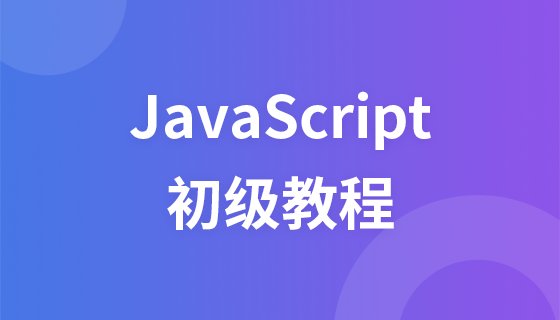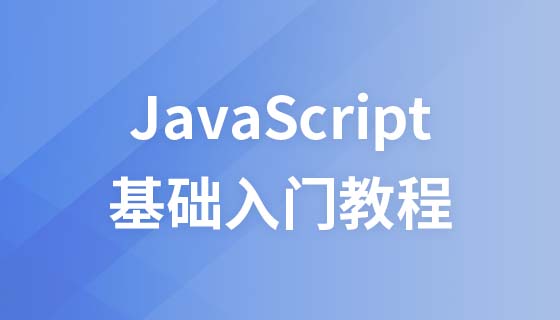이 글은 JS 데코레이터 기능에 대한 관련 사용법과 지식 포인트를 요약한 것입니다. 도움이 필요한 친구들이 참고할 수 있기를 바랍니다.
ES6에서는 클래스 객체(예: 클래스 및 확장)의 관련 정의 및 작업이 추가되어 여러 다른 클래스 간에 일부 메서드나 동작을 공유하거나 확장할 수 있습니다. 현재 이러한 작업을 수행하는 데 도움이 되는 보다 우아한 방법이 필요합니다.
데코레이터란 무엇인가요? 🎜#객체 지향(OOP) 디자인 패턴에서는 데코레이터를 데코레이션 패턴이라고 합니다. OOP의 장식 모드는 상속과 조합을 통해 구현되어야 하며 Python은 OOP의 장식자를 지원하는 것 외에도 구문 수준에서 직접 장식자를 지원합니다.
def decorator(f): print "my decorator" return f @decorator def myfunc(): print "my function" myfunc() # my decorator # my function
def decorator(f):
def wrapper():
print "my decorator"
return f()
return wrapper
def myfunc():
print "my function"
myfunc = decorator(myfuc)Syntax
Object.defineProperty(obj, prop, descriptor)
obj: 속성이 정의될 개체입니다.
반환 값: 함수에 전달된 개체입니다.
속성 설명자
현재 객체에 존재하는 속성 설명자의 두 가지 주요 형태는 데이터 설명자와 저장소입니다. 설명자 가져오기 .
설명자는 동시에 두 가지 형식 중 하나여야 합니다.
데이터 설명자와 액세스 설명자 모두 다음과 같은 선택적 키 값을 갖습니다.
configurable
enumerable은 객체의 속성을 for...in 루프 및 Object.keys() 에서 열거할 수 있는지 여부를 정의합니다.
value
이 속성에 해당하는 값입니다. 유효한 JavaScript 값(숫자, 객체, 함수 등)이 될 수 있습니다. 기본값은 정의되지 않았습니다. writable속성 쓰기 가능 여부가 true인 경우에만 할당 연산자로 값을 변경할 수 있습니다. 기본값은 거짓입니다.
액세스 설명자에는 다음과 같은 선택적 키 값도 있습니다.get
속성을 제공하는 getter getter가 없으면 메소드가 정의되지 않습니다. 이 메소드의 반환 값은 속성 값으로 사용됩니다. 기본값은 정의되지 않았습니다.
set속성에 대한 setter를 제공하는 메서드입니다. setter가 없으면 정의되지 않습니다. 이 메서드는 고유한 매개변수를 받아들이고 매개변수의 새 값을 속성에 할당합니다. 기본값은 정의되지 않았습니다.
설명자에 값, 쓰기 가능, 가져오기 및 설정 키워드가 없으면 데이터 설명자로 간주됩니다. 설명자에 (value 또는 writable) 및 (get 또는 set) 키워드가 모두 있으면 예외가 생성됩니다.
사용법类的装饰
@testable
class MyTestableClass {
// ...
}
function testable(target) {
target.isTestable = true;
}
MyTestableClass.isTestable // true上面代码中,@testable 就是一个装饰器。它修改了 MyTestableClass这 个类的行为,为它加上了静态属性isTestable。testable 函数的参数 target 是 MyTestableClass 类本身。
基本上,装饰器的行为就是下面这样。
@decorator
class A {}
// 等同于
class A {}
A = decorator(A) || A;也就是说,装饰器是一个对类进行处理的函数。装饰器函数的第一个参数,就是所要装饰的目标类。
如果觉得一个参数不够用,可以在装饰器外面再封装一层函数。
function testable(isTestable) {
return function(target) {
target.isTestable = isTestable;
}
}
@testable(true)
class MyTestableClass {}
MyTestableClass.isTestable // true
@testable(false)
class MyClass {}
MyClass.isTestable // false上面代码中,装饰器 testable 可以接受参数,这就等于可以修改装饰器的行为。
注意,装饰器对类的行为的改变,是代码编译时发生的,而不是在运行时。这意味着,装饰器能在编译阶段运行代码。也就是说,装饰器本质就是编译时执行的函数。
前面的例子是为类添加一个静态属性,如果想添加实例属性,可以通过目标类的 prototype 对象操作。
下面是另外一个例子。
// mixins.js
export function mixins(...list) {
return function (target) {
Object.assign(target.prototype, ...list)
}
}
// main.js
import { mixins } from './mixins'
const Foo = {
foo() { console.log('foo') }
};
@mixins(Foo)
class MyClass {}
let obj = new MyClass();
obj.foo() // 'foo'上面代码通过装饰器 mixins,把Foo对象的方法添加到了 MyClass 的实例上面。
方法的装饰
装饰器不仅可以装饰类,还可以装饰类的属性。
class Person {
@readonly
name() { return `${this.first} ${this.last}` }
}上面代码中,装饰器 readonly 用来装饰“类”的name方法。
装饰器函数 readonly 一共可以接受三个参数。
function readonly(target, name, descriptor){
// descriptor对象原来的值如下
// {
// value: specifiedFunction,
// enumerable: false,
// configurable: true,
// writable: true
// };
descriptor.writable = false;
return descriptor;
}
readonly(Person.prototype, 'name', descriptor);
// 类似于
Object.defineProperty(Person.prototype, 'name', descriptor);装饰器第一个参数是 类的原型对象,上例是 Person.prototype,装饰器的本意是要“装饰”类的实例,但是这个时候实例还没生成,所以只能去装饰原型(这不同于类的装饰,那种情况时target参数指的是类本身);
第二个参数是 所要装饰的属性名
第三个参数是 该属性的描述对象
另外,上面代码说明,装饰器(readonly)会修改属性的 描述对象(descriptor),然后被修改的描述对象再用来定义属性。
函数方法的装饰
装饰器只能用于类和类的方法,不能用于函数,因为存在函数提升。
另一方面,如果一定要装饰函数,可以采用高阶函数的形式直接执行。
function doSomething(name) {
console.log('Hello, ' + name);
}
function loggingDecorator(wrapped) {
return function() {
console.log('Starting');
const result = wrapped.apply(this, arguments);
console.log('Finished');
return result;
}
}
const wrapped = loggingDecorator(doSomething);core-decorators.js
core-decorators.js是一个第三方模块,提供了几个常见的装饰器,通过它可以更好地理解装饰器。
@autobind
autobind 装饰器使得方法中的this对象,绑定原始对象。
@readonly
readonly 装饰器使得属性或方法不可写。
@override
override 装饰器检查子类的方法,是否正确覆盖了父类的同名方法,如果不正确会报错。
import { override } from 'core-decorators';
class Parent {
speak(first, second) {}
}
class Child extends Parent {
@override
speak() {}
// SyntaxError: Child#speak() does not properly override Parent#speak(first, second)
}
// or
class Child extends Parent {
@override
speaks() {}
// SyntaxError: No descriptor matching Child#speaks() was found on the prototype chain.
//
// Did you mean "speak"?
}@deprecate (别名@deprecated)
deprecate 或 deprecated 装饰器在控制台显示一条警告,表示该方法将废除。
import { deprecate } from 'core-decorators';
class Person {
@deprecate
facepalm() {}
@deprecate('We stopped facepalming')
facepalmHard() {}
@deprecate('We stopped facepalming', { url: 'http://knowyourmeme.com/memes/facepalm' })
facepalmHarder() {}
}
let person = new Person();
person.facepalm();
// DEPRECATION Person#facepalm: This function will be removed in future versions.
person.facepalmHard();
// DEPRECATION Person#facepalmHard: We stopped facepalming
person.facepalmHarder();
// DEPRECATION Person#facepalmHarder: We stopped facepalming
//
// See http://knowyourmeme.com/memes/facepalm for more details.
//@suppressWarnings
suppressWarnings 装饰器抑制 deprecated 装饰器导致的 console.warn() 调用。但是,异步代码发出的调用除外。
使用场景
装饰器有注释的作用
@testable
class Person {
@readonly
@nonenumerable
name() { return `${this.first} ${this.last}` }
}有了装饰器,就可以改写上面的代码。装饰
@connect(mapStateToProps, mapDispatchToProps)
export default class MyReactComponent extends React.Component {}相对来说,后一种写法看上去更容易理解。
新功能提醒或权限
菜单点击时,进行事件拦截,若该菜单有新功能更新,则弹窗显示。
/**
* @description 在点击时,如果有新功能提醒,则弹窗显示
* @param code 新功能的code
* @returns {function(*, *, *)}
*/
const checkRecommandFunc = (code) => (target, property, descriptor) => {
let desF = descriptor.value;
descriptor.value = function (...args) {
let recommandFuncModalData = SYSTEM.recommandFuncCodeMap[code];
if (recommandFuncModalData && recommandFuncModalData.id) {
setTimeout(() => {
this.props.dispatch({type: 'global/setRecommandFuncModalData', recommandFuncModalData});
}, 1000);
}
desF.apply(this, args);
};
return descriptor;
};loading
在 React 项目中,我们可能需要在向后台请求数据时,页面出现 loading 动画。这个时候,你就可以使用装饰器,优雅地实现功能。
@autobind
@loadingWrap(true)
async handleSelect(params) {
await this.props.dispatch({
type: 'product_list/setQuerypParams',
querypParams: params
});
}loadingWrap 函数如下:
export function loadingWrap(needHide) {
const defaultLoading = (
<p className="toast-loading">
<Loading className="loading-icon"/>
<p>加载中...</p>
</p>
);
return function (target, property, descriptor) {
const raw = descriptor.value;
descriptor.value = function (...args) {
Toast.info(text || defaultLoading, 0, null, true);
const res = raw.apply(this, args);
if (needHide) {
if (get('finally')(res)) {
res.finally(() => {
Toast.hide();
});
} else {
Toast.hide();
}
}
};
return descriptor;
};
}问题:这里大家可以想想看,如果我们不希望每次请求数据时都出现 loading,而是要求只要后台请求时间大于 300ms 时,才显示loading,这里需要怎么改?
总结:以上就是本篇文的全部内容,希望能对大家的学习有所帮助。更多相关教程请访问JavaScript视频教程!
相关推荐:
위 내용은 JavaScript 데코레이터 기능 사용법 요약의 상세 내용입니다. 자세한 내용은 PHP 중국어 웹사이트의 기타 관련 기사를 참조하세요!



